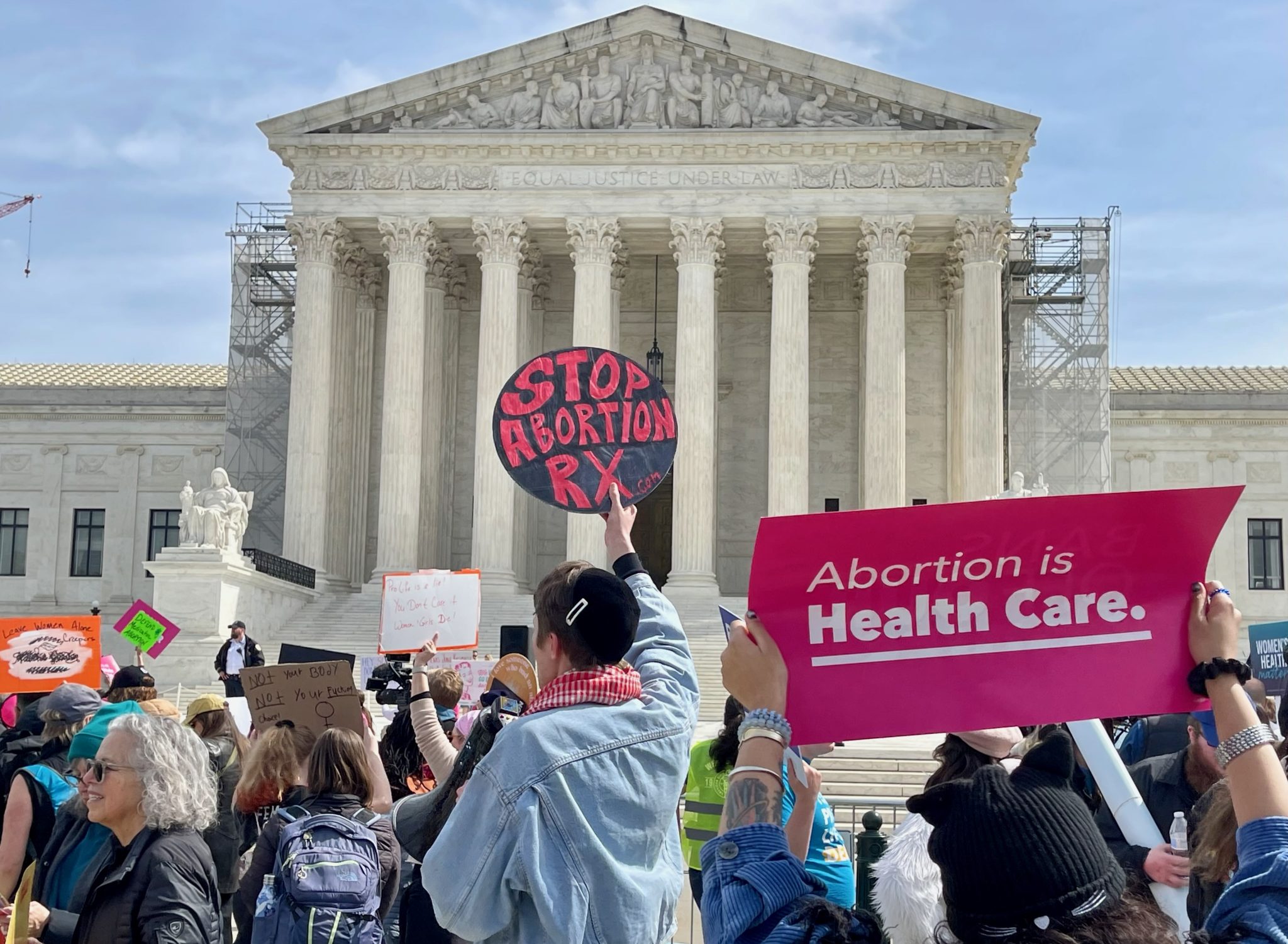
Jordan Meadows, Staff Writer
The debate over personhood and abortion rights continues at the US Supreme Court, with Idaho’s near-total ban on abortion under scrutiny.
The case, argued on April 24, centers around whether Idaho’s abortion restrictions conflict with the Emergency Medical Treatment and Labor Act (EMTALA), a federal law that mandates hospitals to stabilize patients, including pregnant individuals, in emergencies.
Idaho argues that the law does not explicitly address abortions, and instead, the state has established its criteria: a comprehensive prohibition on abortions except in situations where it is imperative to preserve the life of the pregnant woman. This interpretation, if upheld, would extend individual rights to the fetus under a federal statute for the first time and could have far-reaching implications, potentially reshaping medical practices across the country.
Legal scholars warn of the outcome of such a ruling, including the possibility of imposing a nationwide obligation on hospitals. The Biden administration challenged Idaho’s abortion ban, arguing that EMTALA mandates hospitals to provide necessary care, including abortions, irrespective of state laws. However, the state contests this assertion, labeling it as a federal overreach.
Idaho cites a distinct ruling from the Fifth Circuit, which halted the Health and Human Services Department (HHS) from implementing guidance in Texas concerning EMTALA after Roe was overturned.
This guidance, directed at hospitals receiving Medicare reimbursements, stressed their obligation to furnish stabilizing care to pregnant patients regardless of state prohibitions on abortion. The appeals court clarified that EMTALA does not mandate physicians to administer abortions as a necessary stabilizing treatment for emergency medical conditions.
During recent proceedings concerning the FDA’s initiatives to streamline access to the abortion drug mifepristone, Justice Amy Coney Barrett’s inquiries delved into the intricacies of fetal heartbeat and the status of living embryos. Her questions hinted at deliberations over the commencement of life and the ethical considerations surrounding medical practitioners’ conscientious objections to abortions.
The fact that a doctor performed a procedure to clear the uterine lining, Barrett said, “does not necessarily mean that there was a living embryo or a fetus.”
During the Supreme Court’s deliberations on the aftermath of a state abortion ban following the overturning of Roe v. Wade in 2022, Justice Samuel Alito appeared to endorse the notion that a fetus merits the same “stabilizing treatment” as a pregnant individual.
“Isn’t that an odd phrase to put in a statute that imposes a mandate to perform abortions?” Alito asked Solicitor General Elizabeth Prelogar. “The hospital must stabilize the threat to the unborn child, and it seems that the plain meaning is that the hospital must try to eliminate any immediate threat to the child, but performing an abortion is antithetical to that duty,” Alito said, adding that the hospital must protect “the interests of the unborn child.
Solicitor General Prelogar challenged Alito’s interpretation, asserting that the statute obligates hospitals solely to stabilize pregnant women. She contended that Congress introduced the phrase “unborn child” to broaden protections for pregnant individuals and ensure comprehensive medical care.
A report from the liberal organization Pregnancy Justice reveals that at least 19 states have extensive personhood provisions or definitions encompassing fetuses or “unborn children.” The discourse extends beyond legal realms into philosophical and moral territories.
As the Supreme Court navigates this legal maze, the outcome of the case could significantly shape the landscape of reproductive rights in the United States. With the specter of Roe v. Wade looming large, the nation awaits the court’s decision.
